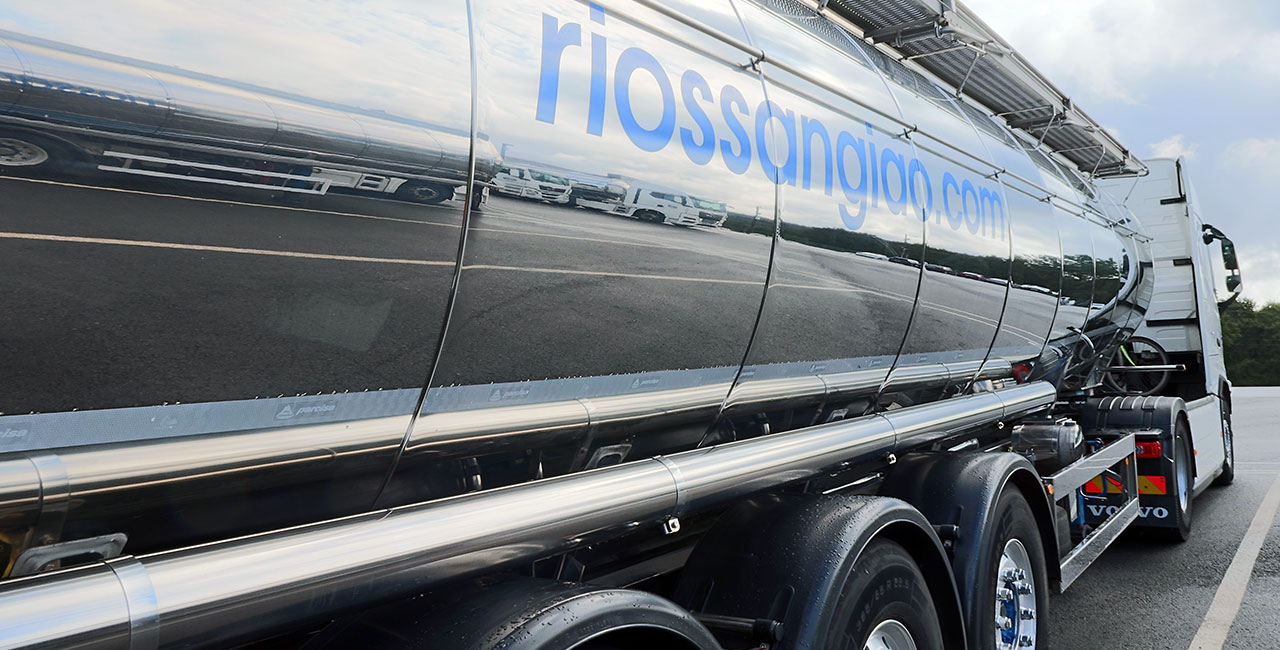
Even though there exist risks and challenges that concern the liquid transport sector, it’s important to take proper actions to reduce them. This would be beneficial not only for the haulier himself but also for the company and other drivers with whom he shares the road.
Rios Sangiao is a business that since 1994 has been dedicated to the transport and preservation of liquid food products. The need to transport products in liquid form arises mainly because of the geographical diversity in food production and consumption, as not everyone has animals at home to obtain milk for breakfast, but many people want to have milk for breakfast.
Liquid transport is the transport of liquid substances from one place to another, using means of transport that are adapted to the conditions of these products.
In our case, the liquid foods we transport are: milk, wine, oil, cream and juice. To transport them, we use the commonly used isothermal tanks.
Apart from the benefits that this type of transport offers us, such as versatility, cost reduction, etc., it also presents certain additional risks and challenges that are not associated with the transport of dry cargoes, due to the nature of the liquids. In addition, this transport requires certain safety and quality measures to ensure that these products arrive at their destination in good condition. To that end, let's take a look at some of the risks and challenges involved in transporting liquids.
One of the main challenges is safety. Spillage or leakage of any foodstuff due to poorly maintained or improperly sealed containers can cause damage to the environment or to people's health, as well as being a great loss to the company. On the other hand, poorly cleaned tanks can lead to contamination of the products transported in them, which damages the quality of the product.
Road accidents are another major challenge faced by transport companies. Although accidents have decreased significantly thanks to safety standards, trucks are still a major factor, with 5% being involved in road accidents with casualties, according to the DGT.
On the other hand, there is the risk of theft or tampering. In recent years, theft from transport trucks has increased significantly, both in terms of the goods they carry and the fuel they need to transport them. Although there are many methods to make theft more difficult, they are not 100% secure. In addition to damaging the goods or the condition of the vehicle, they also pose a risk to the safety and integrity of the driver.
The regulations required for this type of transport are much more extensive and stringent than those for other types of vehicles. It is therefore necessary to comply with all local and international regulations, keeping up to date and adapting procedures accordingly.
Now that we know some of the challenges and risks facing liquid transport, how can we mitigate them? We must ensure that the transports we purchase are in perfect condition, comply with the relevant regulations and are thoroughly and effectively cleaned using the right products and methods. In addition, regular maintenance and checking the condition of doors, valves and seals will help to improve safety and reduce the risk of leakage or contamination.
To reduce traffic accidents, routes with less traffic density can be established, traffic regulations should be respected, fatigue should be avoided by making the necessary stops, and road conditions should be kept up to date.
We must establish routes that do not endanger either the load or the integrity of the driver in order to reduce the risk of theft or damage to the goods. We can also rely on new security systems and technological advances such as surveillance cameras inside or outside the vehicle and motion sensors to help detect unauthorised tampering.
Although there are challenges and risks that apply to the liquid transport sector, it is important to take appropriate measures to mitigate them, such as those mentioned above. It would not only be beneficial not only for the transporter himself but also for the company and other drivers with whom it shares the road.



This has been the work of Sr. Concejo

